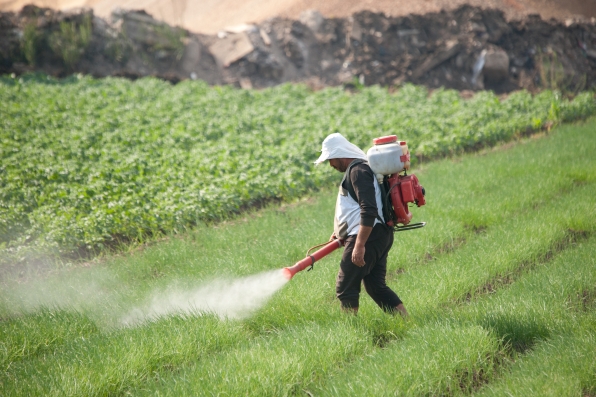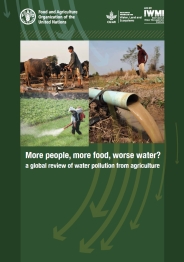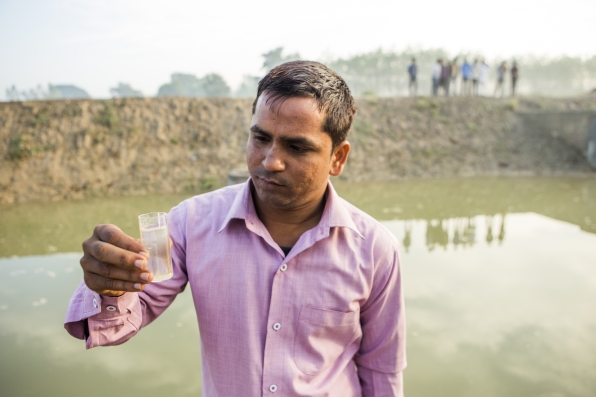Turning around a “toxic” relationship
The High-Level Conference on the International Decade for Action “Water for Sustainable Development,” 2018-2028, taking place this week in Dushanbe, Tajikistan, is not the sort of event where you would expect to meet farmers. Yet, no single group will influence more strongly whether the actions that delegates propose get much traction.

This is partly because agriculture uses roughly 70 percent of global freshwater supplies but also because in many countries it is the single biggest source of water pollution. Water scarcity has captured headlines in recent months because of the Cape Town crisis. But water pollution from agriculture is a more insidious threat, being quite diffuse and hard to measure, and costing many billions of US dollars every year.
First the bad news
This complex predicament is the subject of a new book titled More people, more food, worse water? A global review of water pollution from agriculture. To be launched at a side event in Dushanbe, the book was published jointly by the Food and Agriculture Organization of the United Nations (FAO) and the CGIAR Research Program on Water, Land and Ecosystems (WLE), led by the International Water Management Institute (IWMI).

Parts of the book make for grim reading, with lots of bad news about nutrients, pesticides, salts and sediments. For example, after many years of massive nitrogen and phosphorus discharge from agriculture, large extensions of coastal areas worldwide are undergoing eutrophication. This is the process whereby excess nutrients speed the growth of algae and aquatic plants, thus reducing the oxygen on which other aquatic life depends and creating so-called “dead zones.” Meanwhile, the overuse of pesticides on crops, despite measures to mitigate their potentially negative effects, has often led to alarming levels of toxic substances in soil and water.
On top of these concerns comes the threat posed by faecal waste polluting water via runoff from farms, reuse of wastewater for irrigation and other means. The enormous volume of waste produced by livestock in particular – far exceeding that from the human population – has become a major source of water pollution. This organic matter carries with it high concentrations of pathogens, which cause hundreds of thousands of infections each year, as well as relatively new pollutants, including antibiotics, vaccines, growth promoters and hormones.
Repainting the big picture
The idea, however, is not to paint agriculture as a villain or much less assign blame to farmers. The point rather is that high levels of water pollution from agriculture are the cumulative effect of sweeping demographic and societal changes. To understand this is critical for addressing the problem effectively.
The main changes that account for increased water pollution from agriculture are population growth and dietary changes resulting from higher incomes. As more people climb out of poverty, they cease to depend mostly on grains and other carbohydrate sources, shifting to more varied diets that include meat, dairy products and fish. These trends, in turn, drive the expansion and intensification of agriculture. Thus, the area equipped for irrigation has more than doubled since the 1960s; the number of livestock has more than tripled since the 1970s; and aquaculture has grown more than twenty-fold since the 1980s. Land, water and other agricultural inputs are being used more than ever before.
To curb water pollution from agriculture requires a fundamental shift away from the current destructive patterns of production toward a sustainable pathway that leads to stronger food security and better livelihoods but not at the expense of the environment. This, in turn, requires research and innovation as well as concerted efforts to raise awareness of the need for change and to build the capacities and partnerships that can make it happen.

Photo: Prashanth Vishwanathan / IWMI
Approaches that rely on narrowly focused regulations will not work. Instead, we must promote comprehensive policy solutions that offer farmers incentives to adopt sustainable practices for water, soil, nutrient and pest management. We also need solutions to our faulty global food system, which leaves many people with inadequate diets, while encouraging others to overeat or consume foods with higher water “footprints,” adding to the environmetnal pressure.
Regulations have a role to play but based on new thinking and combined with other responses. One option is to build a consensus on the maximum tolerable level of a given pollutant in a particular water body. The next steps are to set pollution caps, defined through computer modelling, and to make individual landowners responsible for keeping pollution within the agreed limit.
The goals of reduced poverty and hunger, sustainable food consumption and production, and clean water are all enshrined in the United Nations Sustainable Development Goals (SDGs). There is a danger, however, of achieving progress toward some at the expense of others – more food, for example, but worse water. As we enter the International Decade of Action “Water for Sustainable Development,” a major challenge for the food and water sectors will be to build a new relationship that is friendly to both people and the environment.

